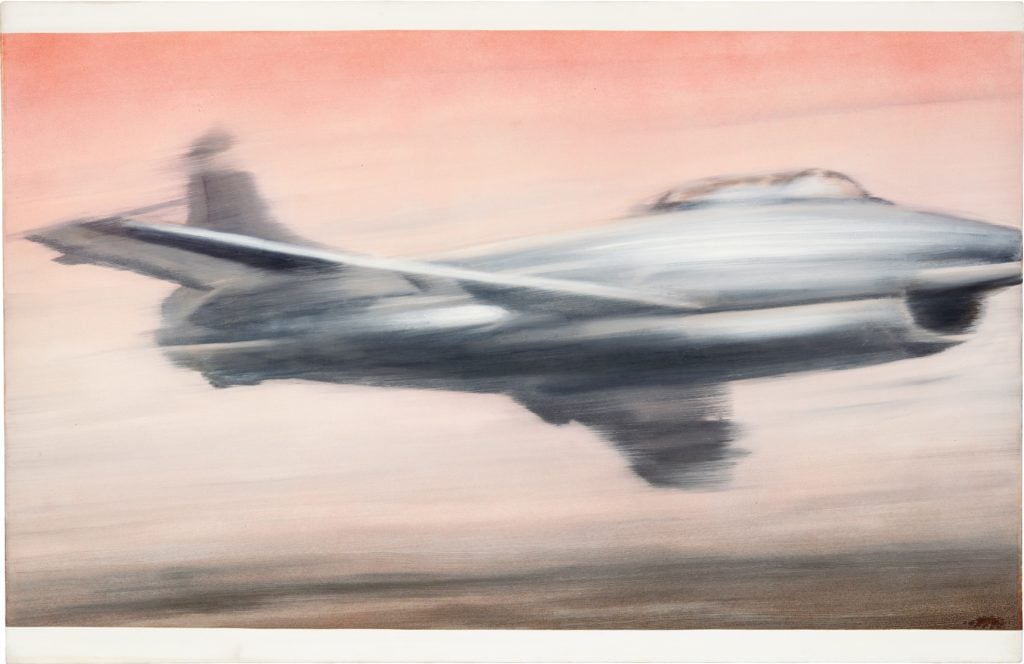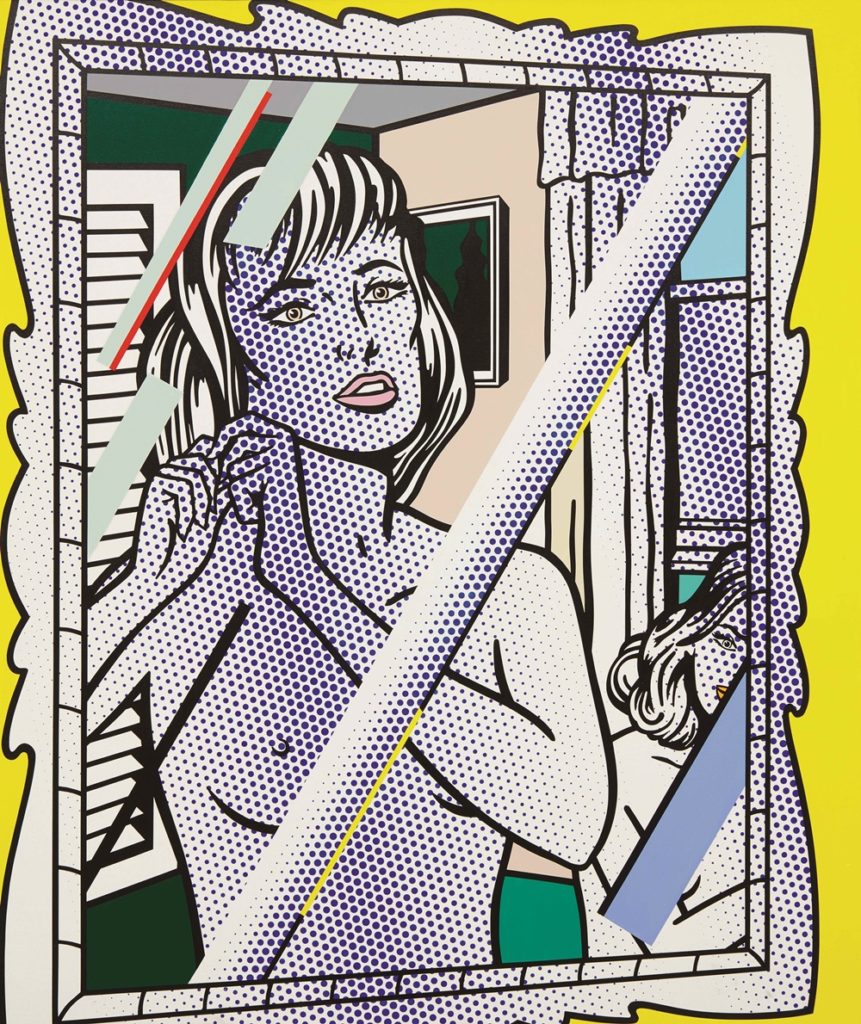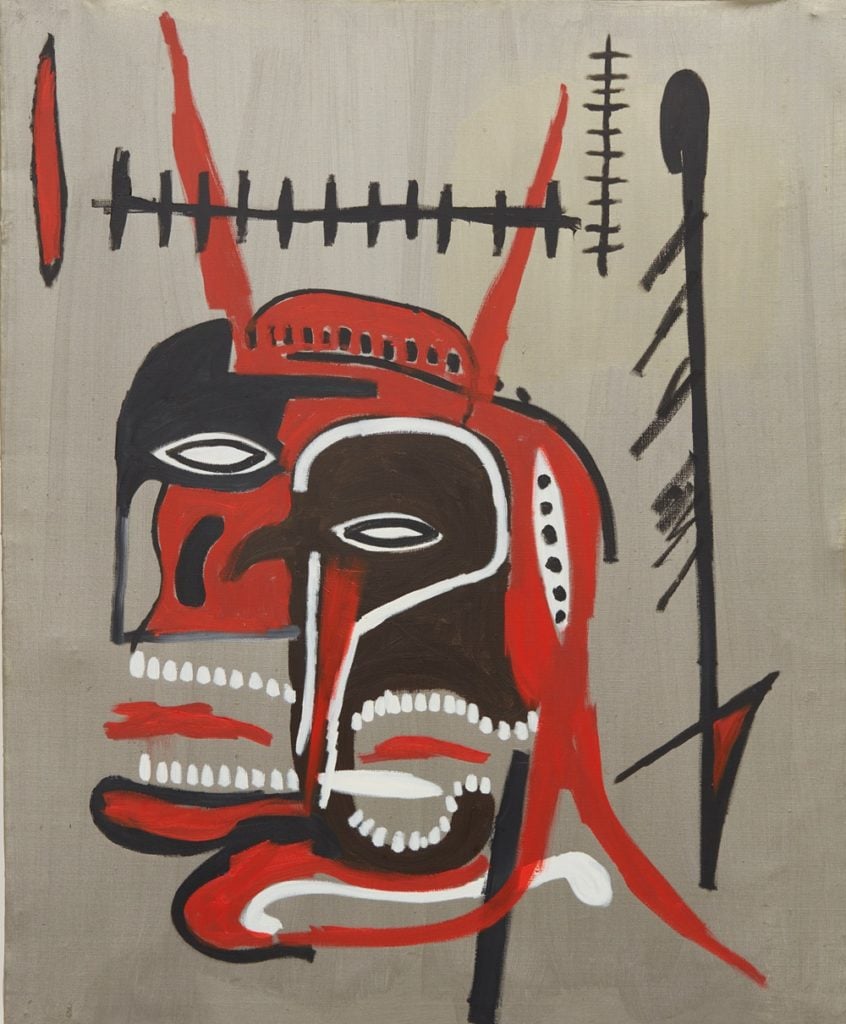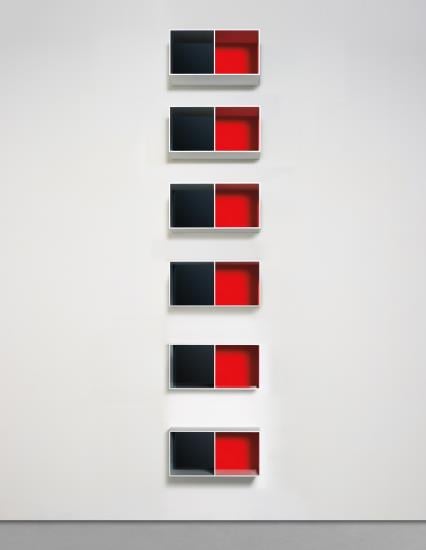Auctions
Hopes Were High at Phillips $111.2 Million 20th Century and Contemporary Sale
The evening saw two records for female artists from Latin America.

The evening saw two records for female artists from Latin America.

Henri Neuendorf

Tempered against the backdrop of the decent performances of Sotheby’s $157.7 million Impressionist and Modern art sale on Monday, and Christie’s $277 million post-war and contemporary art sale on Tuesday, eyes were on Phillips’ 20th century and contemporary art evening sale on Wednesday evening.
The total, $111.2 million, surpassed the pre-sale low estimate of $100 million but fell short of the ambitious $144 million high estimate.
Hopes were high tonight, with the auction house assembling an impressive lineup of works. However, the sale sputtered when the top lots, Gerhard Richter’s Düsenjäger (1963), and Roy Lichtenstein’s Nudes in Mirror (1994) only just managed to surpass their low estimates ($25.5 million, and $21.5 million, respectively.)

Carmen Herrera Cerulean (1965). Photo: courtesy of Phillips, New York.
After the sale, Phillips chairman and CEO Edward Dolman’s reaction was somewhere between contentment and satisfaction. “We were very pleased…” he said. “Only three things failed to sell, which is a sign of an exceptionally strong sale. Everything performed much as we though it was going to perform.”
The auction got of to a superb start when the opening lot, Carmen Herrera’s Cerulean (1965), sold for a record $970,000 to a telephone bidder. “Two records for Latin American female artists, which shows the continuous strength and growing strength of Latin America,” Dolman added. “The Carmen Herrera was particularly gratifying because it was a very good example of her work, early, and probably helped by her recent show at the Whitney Museum downtown here in New York.” Mira Schendel’s Untitled (1985) set the other record, selling for $970,000.
Richter’s Düsenjäger (1963) was the evening’s top selling lot. The artwork was rumored to have come from the collection of tech billionaire Paul Allen, who bought the work at Christie’s New York in November 2007 for $11.2 million. Whomever the consignor was, it was a night for celebration, as the painting sold for $25.5 million, just above the pre-sale low estimate of $25 million, but more than double the 2007 purchase price.

Roy Lichtenstein Nudes in Mirror (1994). Courtesy of Phillips, New York.
The Richter was followed by Lichtenstein’s vandalized but restored Nudes in Mirror (1994). The painting included the interesting backstory of having been slashed by a zealous patron while it was on view at the Kunsthaus museum in Bregenz, Austria. Phillips’ strategy of marketing the incident as a value-adding attribute ultimately paid off when the work just surpassed its “upon request” pre-sale estimate of $20 million, selling to a telephone bidder for $21.5 million.
“There was a considerable amount of debate about the real value of that in the market because it had been slashed and sustained significant damage, which we thought made the picture more interesting,” Dolman said. “I think we marketed it extremely well and we got the full value out of the picture, which it deserves.”
The sale was also given a boost by Clyfford Still’s Untitled (ca. 1948-49), which sold for $13.6 million, beating its pre-sale low estimate of $12 million.
However, the results of Tommy Hilfiger’s works, who consigned five works from his personal collection, was somewhat indicative of the mixed night despite auctioneer’s best efforts to enthusiastically announce the works.

Jean Michel Basquiat Untitled (Devil’s head) (1987). Courtesy of Phillips.
Andy Warhol’s Cowboy’s and Indians (1986), the first work from Hilfiger’s collection, a portfolio of 10 screenprints, exceeded its pre-sale high estimate, generating $394,000.
Meanwhile Tico Mugrabi, who was accompanied by his father Jose, sparred with a telephone bidder for Hilfiger’s Keith Haring diptych Snake and Man; Dogs and Men (1983). As the bids increased, Mugrabi dropped out and was ultimately beaten by a telephone buyer who won the artwork to the tune of $1.1 million, just over its low estimate. Next, Hilfiger’s Jean-Michel Basquiat Untitled (Devil’s Head) (1987) squeaked by its low estimate, for $3.6 million.
While Jean Dubuffet’s Le Gommeux (1972) also sold above the low estimate, achieving $760,000, the designer took a modest loss of $13,000, having bought the work at Christie’s New York in November 2013 for $773,000.
Hilfiger took a more substantial loss of $276,500 on his Damien Hirst work The Crown of Life (2006), which surpassed its low estimate to reach $1,150,000, but sold for less than what he paid when he bought it at Phillips de Pury in November 2011 for $1,426,000.

Donald Judd
Untitled (Menziken 88-16) (1988). Photo: courtesy of Phillips.
There were laughs in the room when the auctioneer looked for a bid of $200,000 in the closing stages of the sale of a Donald Judd stacked work Untitled (Menziken) (1988), which was estimated to sell for between $2,000,000 and $3,000,000. When he finally hammered the work down for $2 million ($2.4 million including premium), he remarked that the winning telephone bidder “nearly got the deal of the century there.”
Elsewhere, Michael Borremans’ Sweet Disposition (2003) failed to sell, along with Ed Ruscha’s Peas Asparagus (1991), and Francis Picabia’s Untitled (ca. 1938-40).
But with 99% of works sold by value and 92% sold by lot, Phillips recorded a solid, if unspectacular sale. This allayed some fears of the election adversely effecting the art market, a point reinforced by Dolman, who reiterated: “I don’t think [the election] affected our sales, one way or another.”